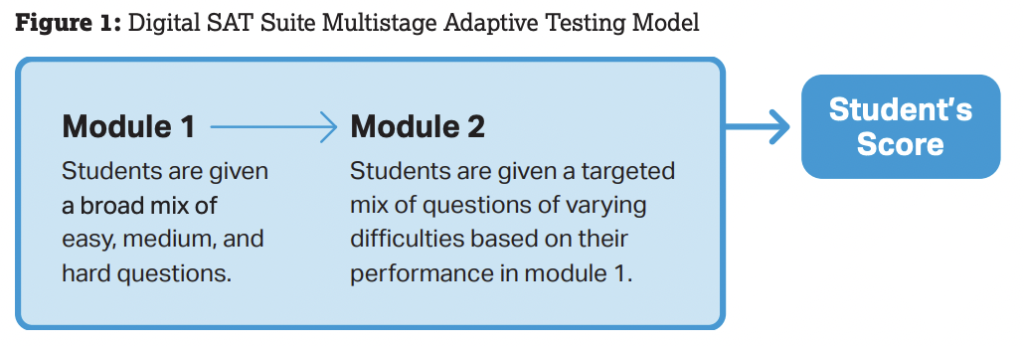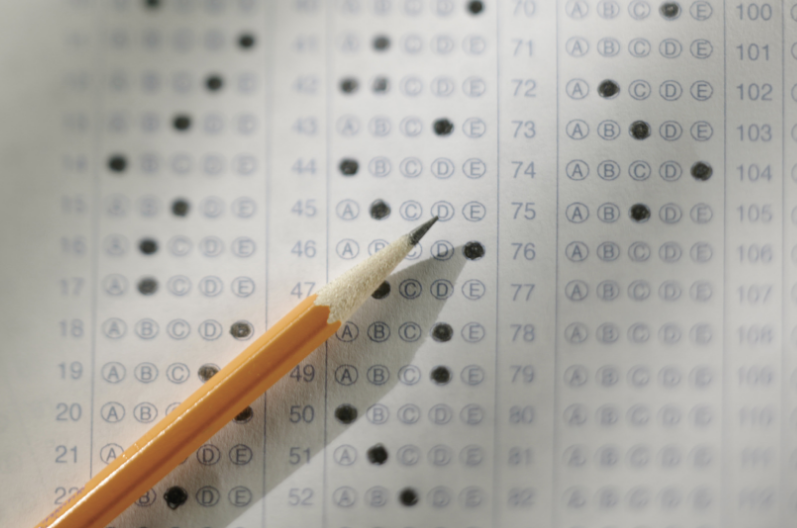Last month, College Board, creators of the SAT and AP exams, announced the release plan for a new digital SAT. This online version of the test launches internationally starting next year. In this blog, we’ve summarized the most important features and changes to the SAT in this update.
When will this happen?
Firstly, this update will not affect current juniors. The digital SAT will not launch in the US until Spring 2024, so this will affect current sophomores.
What’s new in the digital SAT?
The format and scoring of the SAT will not significantly change. The digital and paper SAT scores are equivalent. However, the online test will use a new testing model: “multistage adaptive testing (MST).” In essence, each section now breaks down into two “modules.”

Courtesy of College Board
The first module will provide students with a range of questions at different difficulty levels. After this first module, there will be a pause. Then, the test will offer each student a second module that best matches their individual skill level based on their answers to the first module. MST allows the digital SAT to adjust to each test-taker and also improves testing efficiency. As a result, MST also reduces and nearly eliminates the ability for students to cheat or communicate answers to others, since every test will be unique.
On average, students will also have more time overall to answer each question.
In terms of content, the Reading and Writing section are combined into one section. This combined section will include a greater number of shorter reading passages, allowing for a greater variety of topics. Each of these shorter reading passages will have only one question to accompany it, as opposed to several questions for one longer passage.
For Math, calculators will now be allowed throughout the entire section. Additionally, College Board has revised and reduced the length of word problems.
How does the test work technologically?
The test will be conducted within a dedicated testing app, which will record timing, internet drops or failures, and, of course, students’ answers and actions. The app can withstand Internet connectivity failures and saves automatically in the case of device battery failure. Students will need to bring their devices charged on testing day in case of limited outlet availability at the testing site. However, there is also an option to request that SAT provide a particular student with a device when registering for the test.
The app provides a calculator for the appropriate Math section, though students can still bring their own approved calculators if they’d prefer.
The in-built timer removes potential proctor error. Additionally, students can hide it if they’d like, while still receiving a 5-minute alert.
How does this affect accommodations?
No significant changes to accommodations or the accommodations requesting process have been made. College Board will continue to offer previously available accommodations on the Digital SAT. However, students with extended time will not be able to end a section early.
 What does this mean for me/my student?
What does this mean for me/my student?
That’s entirely up to you! Notably, the ACT has not announced any plans to launch their own digital test. If you would like to schedule a free assessment to see which test—the SAT or the ACT—is best for you or your student, please contact us. We are also happy to schedule a meeting to discuss individualized options and recommendations.


